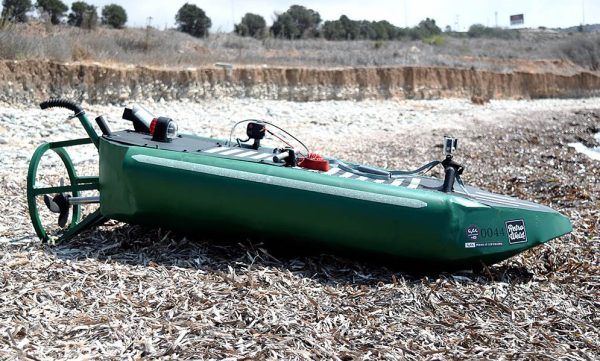Chances are you’ve spent a lot of time trying to think of the next great project to hit your workbench. We’ve all built up a set of tools, honed our skills, and set aside some time to toil away in the workshop. This is all for naught without a really great project idea. The best place to look for this idea is where it can make life a little better.
I’m talking about Assistive Technologies which directly benefit people. Using your time and talent to help make lives better is a noble pursuit and the topic of the 2016 Hackaday Prize challenge that began this morning.
Assistive Technology is a vast topic and there is a ton of low-hanging fruit waiting to be discovered. Included in the Assistive Technology ecosystem are prosthetics, mobility, diagnostics for chronic diseases, devices for the aging or elderly and their caregivers, and much more. You can have a big impact by working on your prototype device, either directly through making lives better and by inspiring others to build on your effort.

Hardware prototypes of the OpenBionics project

Patrick Joyce, team leader of Eyedrivomatic
Need some proof that this is a big deal? The winners of the 2015 Hackaday Prize developed a 3D printed mechanism that links electric wheelchair control with eye movement trackers called Eyedrivomatic. This was spurred by a friend of theirs with ALS who was sometimes stuck in his room all day if he forgot to schedule a caregiver to take him to the community room. The project bridges the existing technologies already available to many people with ALS, providing greater independence in their lives. The OpenBionics Affordable Prosthetic Hands project developed a bionic hand with a clever whiffletree system to enable simpler finger movement. This engineering effort brings down the cost and complexity of producing a prosthetic hand and helps remove some of the barriers to getting prosthetics to those who need them.

Utrasonic sensors measure the distance to objects, giving haptic feedback to the wearer

This prototype lets you remotely check that the stove is not left on

Hand Drive uses a rowing motion to move a wheelchair
The Is the Stove Off project adds peace of mind and promotes safe independence through an Internet connected indicator to ensure the kitchen stove hasn’t been left on and that it isn’t turned on at peculiar times. Pathfinder Haptic Navigation reimagines the tools available to the blind for navigating their world. It uses wrist-mounted ultrasonic sensors and vibration feedback, allowing the user to feel how close their hands are to objects. Hand Drive is another wheelchair add-on to make wheeling yourself around a bit easier by using a rowing motion that doesn’t depend as much on having a strong hand grip on the chair’s push ring.
 In most cases, great Assistive Technology is not rocket science. It’s clever recognition of a problem and careful application of a solution for it. Our community of hackers, designers, and engineers can make a big impact on many lives with this, and now is the time to do so.
In most cases, great Assistive Technology is not rocket science. It’s clever recognition of a problem and careful application of a solution for it. Our community of hackers, designers, and engineers can make a big impact on many lives with this, and now is the time to do so.
Enter your Assistive Technology in the Hackaday Prize now and keep chipping away on those prototypes. We will look at the progress all of the entries starting on October 3rd, choosing 20 entries to win $1000 each and continue onto the finals. These finalists are eligible for the top prizes, which include $150,000 and a residency at the Supplyframe Design Lab, $25,000, two $10,000 prizes, and a $5,000 prize.








 In most cases, great Assistive Technology is not rocket science. It’s clever recognition of a problem and careful application of a solution for it. Our community of hackers, designers, and engineers can make a big impact on many lives with this, and now is the time to do so.
In most cases, great Assistive Technology is not rocket science. It’s clever recognition of a problem and careful application of a solution for it. Our community of hackers, designers, and engineers can make a big impact on many lives with this, and now is the time to do so.







 The firing assembly in the jet comes from a Nerf Rival Zeus Blaster, which is itself an interesting device. It uses two electric flywheels to launch soft foam balls – much like a pitching machine. With one flywheel running a little faster than the other, the trajectory can be modified. For example, a slight topspin gives the balls a longer and more stable flight path. Of course, foam balls slow down quickly once launched and at high speeds the aircraft can overtake the same projectiles it just fired, but it’s fun all the same.
The firing assembly in the jet comes from a Nerf Rival Zeus Blaster, which is itself an interesting device. It uses two electric flywheels to launch soft foam balls – much like a pitching machine. With one flywheel running a little faster than the other, the trajectory can be modified. For example, a slight topspin gives the balls a longer and more stable flight path. Of course, foam balls slow down quickly once launched and at high speeds the aircraft can overtake the same projectiles it just fired, but it’s fun all the same.









